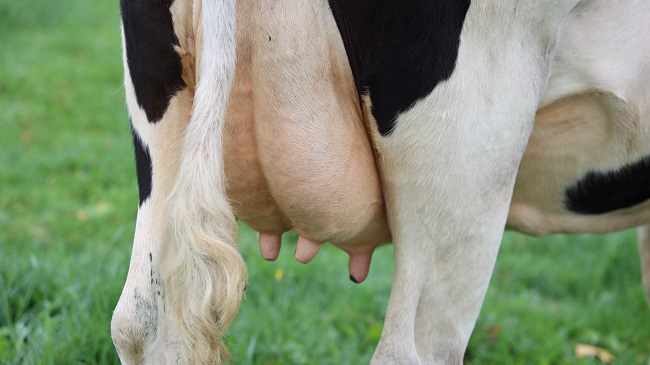
The purpose of a dry period is to allow the cow’s udder an opportunity to regenerate secretory tissue and to allow the digestive system to recover from the stress of high levels of feed intake. Research showed the importance of having a dry period, which involved the use of identical twins. One twin from each set was milked continuously through the first three lactations. The other twin was given a 60-day dry period between each lactation. Twin mates which were milked continuously produced about the same amount of milk at their peak in the second and third lactations as in their first lactation. Those given a 60-day dry period peaked about ten pounds higher in the second lactation than they did in their first lactation. The twins milked continuously averaged only 75% as much milk in their second lactation and only 62% as much in their third lactation as their twin mates which had a 60-day dry period. At the end of the third lactation, all cows were given a 60-day dry period. The production of those milked without a dry period between previous lactations recovered and was as high during the fourth lactation as for the twin mates that had been allowed a 60-day dry period between each lactation.
Drying Off the Cow
The recommended method of drying off is to stop milking the cow abruptly. Cows should not be milked partially for several days or milked every other day to dry off. This practice will prolong the drying off process and may increase the incidence of mastitis. The pressure of the milk in the udder assists in the drying off process. If the cow is producing more than 40 pounds of milk daily, it may be necessary to reduce feed intake for several days prior to drying off. Reducing feed intake by 50 to 70% will drastically reduce the supply of nutrients available to the udder, causing milk synthesis to decrease.
Metabolic Disorders
The major metabolic disorders that affect dry cows are usually the result of nutrition and feed management problems. These disorders include milk fever, ketosis, fatty livers, retained placenta, displaced abomasum, and udder edema. Producers should strive to achieve the following incidence rates for the major metabolic disorders: milk fever, less than 5%; displaced abomasum, less than 5%; retained placenta, less than 8%; and ketosis, less than 3%. Many metabolic and digestive disorders that occur at calving are interrelated. Milk fever, for instance, is associated with higher incidences of dystocia, metritis, displaced abomasum, retained placenta, and low conception rates. If an incidence rate in the herd for any of these disorders is higher than expected, a thorough review of the dry cow program needs to be completed.
Related Articles & Free Email Newsletter Sign Up
How Body Condition Scoring Helps Dairy Herd Management
How Vitamins and Minerals Affect Dairy Cow Health & Fertility
Why Increased Holstein Milk Production Has Decreased Fertility Rates


Comment here